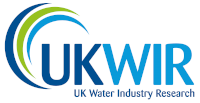Focus on discharges from sewers
24/08/2022
Treatment options for storm overflows
The Environment Act places a new duty directly on water companies to secure a progressive reduction in the adverse impact of discharges from storm overflows.
To achieve this, we need to better understand the opportunities, costs and benefits of different treatment options. This project will achieve this by: comparing available solutions and their suitability for rural and urban environments, reviewing current treatment technologies available and looking at how these perform in different flow conditions to help build a clearer picture. The carbon footprint of these solutions will also be considered.
The research should lead to improvements to the environment, water quality, amenity and social value.
Understand the long-term costs and wider benefits of Surface Water removal and SuDS to tackle sewer flooding and storm overflow operation
Removing surface water from combined sewers via SuDS is a more sustainable alternative to building traditional grey infrastructure and has the potential to deliver wider benefits to the environment and society, including flood resilience, enhanced amenity value and reduced carbon emissions.
Companies need to understand the costs, benefits, timescales and challenges of these alternative solutions to decide whether to invest in SuDS over traditional grey infrastructure. This work will help improve our understanding of these aspects through surveys and data capture from water companies, other key organisations and analysing previous research.
Decisions can then be made with a better understanding, providing tools for planning purposes, and helping to inform related regulation and policy.
Learning and recommendations from customer behaviour campaigns on blockage reduction
Over half of all sewer blockages are caused by fats, oils, greases and wet wipes, making them one of the biggest challenges in achieving zero uncontrolled discharges and companies spend millions of pounds each year responding to the problems they cause.
Water companies regularly run sewer blockage awareness campaigns, but the impact of these are not shared at a national level. This study will see all companies sharing information about their campaigns and levels of success achieved from them.
The results will show whether an industry-wide approach would be beneficial, along with recommendations for the best way to deliver future campaigns to maximise benefits.
Quantifying, managing and communicating the differences in storm overflow spill data between EDM outputs and hydraulic model predictions
The actual frequency and duration of discharges from storm overflows can often be different to those predicted by modelling used for strategic planning and options development through the Drainage and Wastewater Management Plans (DWMP) and Water Industry Natural Environment Programme. Reasons for this difference could include a mix of model tolerances, yearly rainfall variation and counting methodology.
Greater coverage of sewer modelling and event duration monitoring (EDM) is key to understanding how the datasets complement each other. This information can then be used for planning as well as to better understand and address performance and external communication approaches.
The project will compare EDM data and hydraulic model outputs to assess how EDM data can be used to ensure DWMPs are robust and effective.
Modelling sewer inlet capacity restrictions
The risk of local surface water flooding during severe rainfall is a matter which the water sector needs to collaborate on to improve.
Hydraulic sewer models assume all rainfall run-off enters the sewerage network unrestricted, but this isn’t always the case. It is essential that flood risk from the sewerage system is representative of real risk to avoid wasted investment, which could be better used to support development of a collaborative solution, so customers are at reduced risk from all types of flooding.
This comprehensive review will include a look at highway/ building drainage standards and assessing global best practice. The results will provide a proactive modelling guide, outlining the best way to model inlet capacity restrictions and the thresholds to use.
